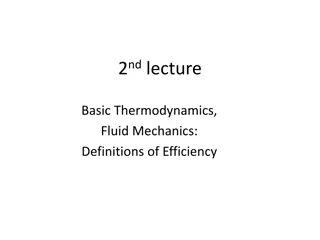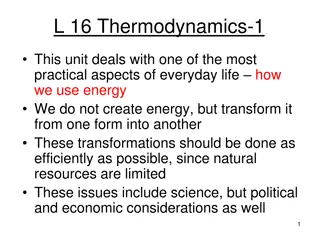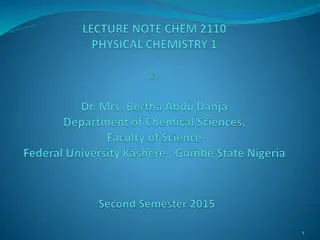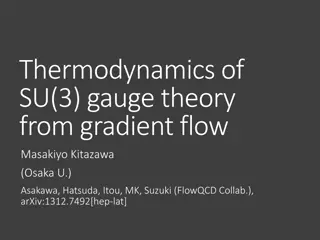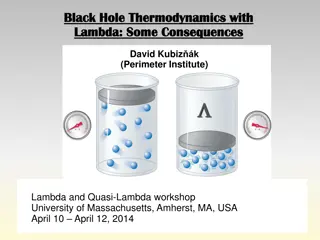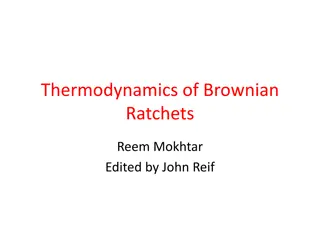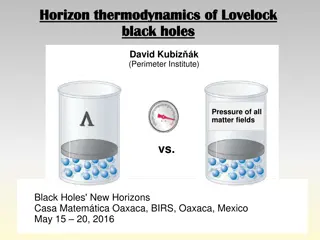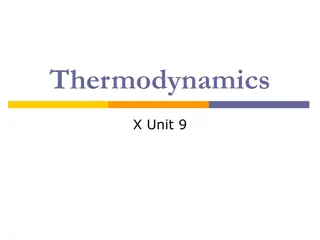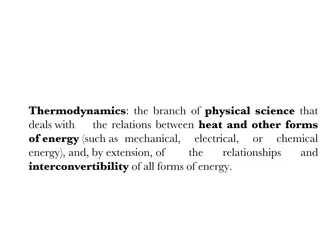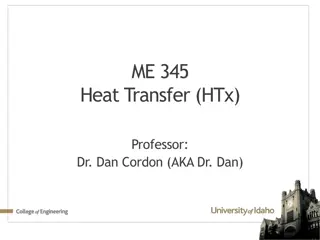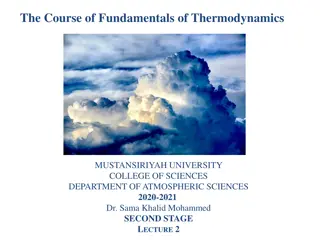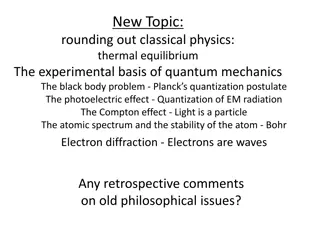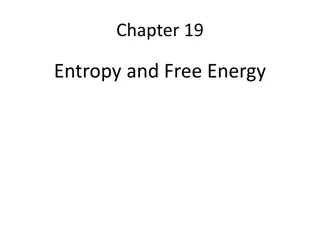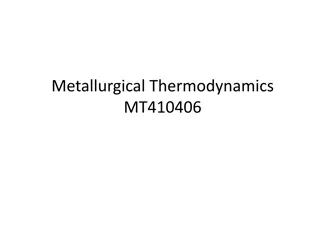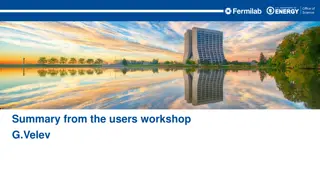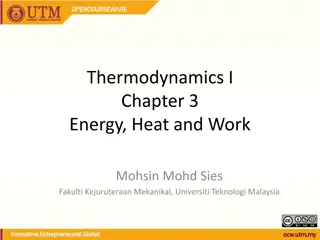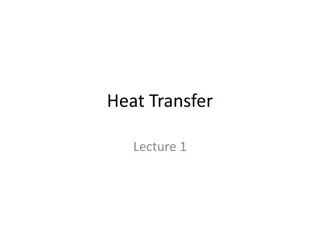
Understanding the Otto Cycle: Core of Gasoline Engines
The Otto cycle, essential for gasoline engines, powers transportation vehicles like cars and motorcycles. Learn about its phases and components for improved engine design and efficiency.
Download Presentation

Please find below an Image/Link to download the presentation.
The content on the website is provided AS IS for your information and personal use only. It may not be sold, licensed, or shared on other websites without obtaining consent from the author. If you encounter any issues during the download, it is possible that the publisher has removed the file from their server.
You are allowed to download the files provided on this website for personal or commercial use, subject to the condition that they are used lawfully. All files are the property of their respective owners.
The content on the website is provided AS IS for your information and personal use only. It may not be sold, licensed, or shared on other websites without obtaining consent from the author.
E N D
Presentation Transcript
Introduction The Otto cycle is a thermodynamic cycle that forms the basis for most gasoline-powered internal combustion engines. The Otto cycle is the thermodynamic cycle that powers most gasoline engines, like those in cars and motorcycles. This cycle explains how energy is converted from fuel into work that moves the engine s parts. Named after Nikolaus Otto, who developed the first practical gas engine in the 19th century.
Purpose and Importance Understanding the Otto cycle is essential because it s the core of most gasoline engines used in transportation, like cars, motorcycles, and small airplanes. The cycle helps us understand engine efficiency (how effectively fuel energy is converted into mechanical energy). Knowing this, engineers can improve engine designs for better fuel efficiency and power output.
Components An engine using the Otto cycle has four essential components: 1. Piston - Moves up and down in a cylinder, compressing and expanding gases. 2. Cylinder - The chamber where fuel combusts, driving the piston. 3. Spark Plug - Ignites the fuel-air mixture, creating a mini explosion that drives the piston. 4. Crankshaft - Converts the piston's movement into the rotational motion needed to power a vehicle.
Phases of the Otto Cycle The Otto cycle has four main phases that take place inside an engine. Here s how each phase works: Isentropic Compression: The piston compresses the fuel-air mixture, raising its pressure and temperature. This compression preps the mixture for ignition. Adiabatic Compression: The air-fuel mixture is compressed in the cylinder, increasing its temperature and pressure without heat exchange with the surroundings.
Constant-Volume HeatAddition: When the spark plug ignites the mixture, a rapid explosion heats the gas. Since the piston is momentarily stationary, volume remains constant but pressure spikes. Isochoric (Constant Volume) Heat Addition: At the end of the compression stroke, a spark plug ignites the air-fuel mixture, causing a rapid increase in pressure and temperature while the volume remains constant. Isentropic Expansion: The heated gas expands, pushing the piston down with force, which creates the power that drives the crankshaft. Adiabatic Expansion: The high-pressure gases expand, performing work on the piston, which moves down and converts thermal energy into mechanical energy.Again, this process occurs without heat transfer.
Constant-Volume Heat Rejection: The exhaust valve opens, releasing burnt gases and preparing for a fresh fuel-air mixture to enter. Isochoric Heat Rejection: After the expansion, the exhaust gases are expelled, and heat is released while the volume remains constant, returning to the initial state.
Pressure-Volume (PV) Diagram The diagram shows the four stages of the cycle in terms of pressure and volume. As the piston compresses the gas, pressure and volume change in a pattern shown on the PV graph. Each phase corresponds to a unique section on the graph, which visualizes how energy flows in the engine. Goal: Use visuals to explain each phase s effect on pressure and volume.
Thermodynamic Efficiency: Efficiency measures how much of the fuel s energy is converted to useful work. The efficiency of the Otto cycle depends on the compression ratio (how much the piston compresses the gas) and the specific heat ratio of the gases used.
Applications of the Otto Cycle: The Otto cycle is applied in most gasoline-powered vehicles (e.g., cars, motorcycles), small engines (e.g., lawnmowers, leaf blowers), and even small aircraft engines. These engines are typically chosen for their compact design and reasonable efficiency.
Introduction The Diesel Cycle is a thermodynamic cycle commonly used in diesel engines. It is characterized by its use in internal combustion engines, where fuel is injected at high pressure, causing ignition due to compression. Named after Rudolf Diesel, who patented the diesel engine in 1892.
Stages of the Diesel Cycle The Diesel Cycle consists of four main stages: Isentropic Compression Reversible Constant Pressure HeatAddition Isentropic Expansion Reversible Constant Volume Heat Rejection These stages correspond to the four strokes of a typical diesel engine: Intake, Compression, Power (Expansion), and Exhaust
1. Isentropic Compression The cycle begins with isentropic compression. During compression, the air is compressed adiabatically, meaning no heat is exchanged with the surroundings. As a result, the air temperature and pressure increase significantly. Compression Ratio: This high compression ratio is a distinguishing feature of diesel engines, often ranging from 15:1 to 20:1.
2. Constant Pressure Heat Addition At the end of compression, fuel is injected directly into the hot, compressed air. This leads to the combustion of the fuel, which causes a rapid increase in temperature. Unlike the Otto cycle (in gasoline engines), the combustion process in the Diesel cycle occurs at a nearly constant pressure. This phase transforms chemical energy into thermal energy.
3. Isentropic Expansion Following combustion, the high-pressure gases expand, pushing the piston back down. This expansion is also an adiabatic process where the gases work on the piston. During this process, energy is converted from heat to mechanical work, providing the engine s power.
4. Constant Volume Heat Rejection The cycle concludes with a heat rejection phase at constant volume. Once the piston reaches the bottom of its stroke, exhaust valves open, and the gases are expelled. This prepares the cylinder for the next intake of air and repeats the cycle.
Efficiency of the Diesel Cycle The efficiency of the Diesel Cycle depends on the compression ratio and the specific heat ratio of the air-fuel mixture. Formula for Efficiency: Where: ? ?: Compression ratio (v1/v2) : Cutoff ratio (v3/v2) : Specific heat ratio (Cp/Cv) Diesel engines are more efficient than gasoline engines, especially under high-load conditions.
Advantages of the Diesel Cycle High Efficiency: Diesel engines are more thermodynamically efficient due to high compression. Fuel Economy: Diesel engines consume less fuel over long distances. Durability: Diesel engines are robust, making them ideal for heavy-duty applications. Power Output: High torque output makes them suitable for heavy loads.
Disadvantages of the Diesel Cycle Noise and Vibration: Diesel engines tend to be noisier. Emissions: Diesel engines can produce more particulate matter (PM) and NOx emissions. Cost: Diesel engines are typically more expensive due to their robust construction. Starting in Cold Weather: They can be harder to start in cold weather without preheating.
Diesel Cycle vs. Otto Cycle Uses compression ignition, where fuel ignites due to temperature from compressed air. Has a higher compression ratio (typically 15:1 to 20:1), leading to better efficiency. Heat is added at constant pressure as fuel is injected into the cylinder. Uses diesel fuel and is widely used in trucks, buses, industrial engines, and power generation. Higher thermal efficiency due to a higher compression ratio and more efficient fuel combustion. Utilizes spark ignition, where a spark plug ignites mixture. Operates at a lower compression ratio (typically because of the risk of knocking. Heat is added at constant volume during the power stroke. Uses gasoline and is common in cars, motorcycles, vehicles. Generally, has efficiency due compression ratio. the high the air-fuel 8:1 to 12:1) and light lower to thermal lower a
Conclusion The Otto Cycle is ideal for light vehicles, offering smooth performance and lower compression, making it suitable for cars and motorcycles. The Diesel Cycle, with its high efficiency and power, excels in heavy-duty applications like trucks and industrial machines. Both cycles play essential roles, each tailored to different energy and performance demands in transportation and industry.

